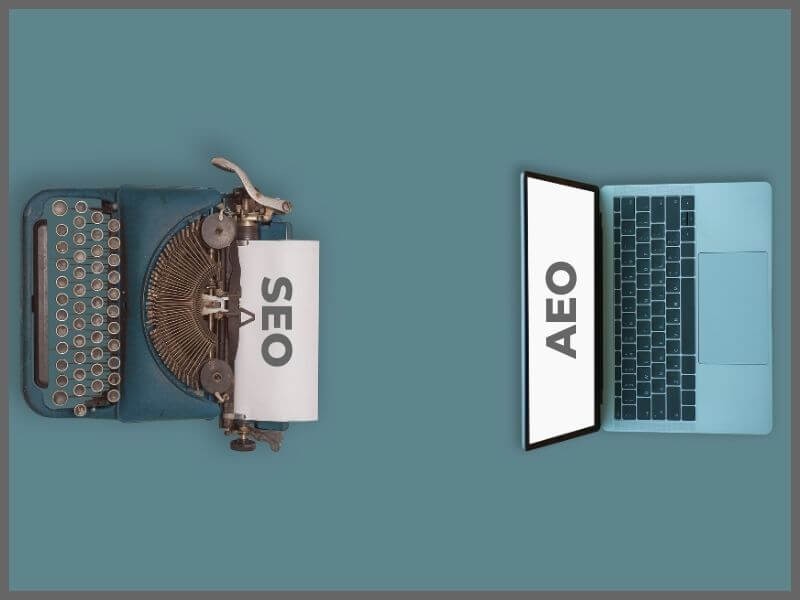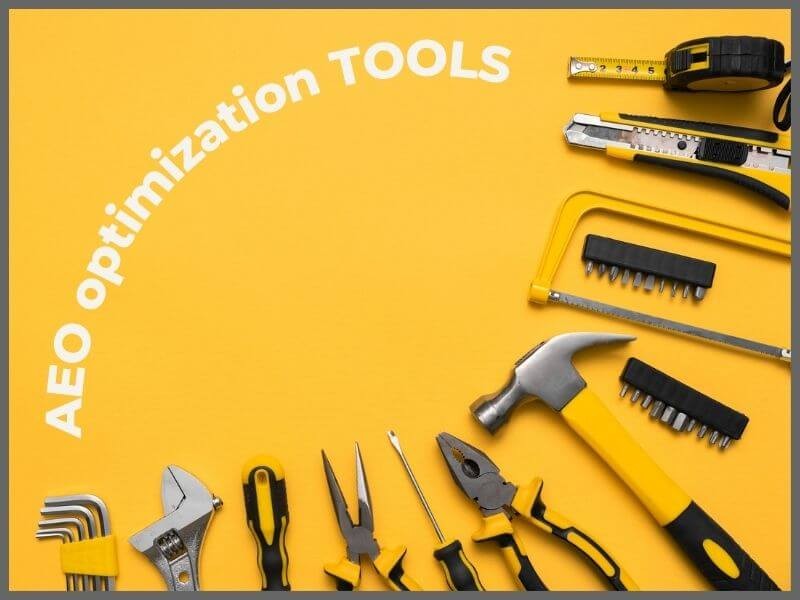
How to answer your users’ questions while also being first on Google? AEO (Answer Engine Optimization) helps your content stand out as accurate and fast, whether through Google, Alexa, or Siri. In this guide, learn how to tailor your content to attract attention, build trust, and boost your visibility online.
Users increasingly want answers immediately instead of browsing to find what they need.
AEO (Answer Engine Optimization), or optimization for answers, is a way of adapting online content so users can get answers to their questions—quickly and accurately.
Unlike "traditional" optimization methods, which focus on achieving the best possible ranking for a website in search results, AEO focuses on providing specific answers directly in the results or through voice assistants such as Google Assistant, Alexa, and Siri.
The goal of AEO is to simplify access to information without the need to browse multiple web pages. Instead of spending time searching for answers, search engines immediately display the requested information at the top of the results.
Examples of how AEO works:

Both SEO (Search Engine Optimization) and AEO (Answer Engine Optimization) play their roles in attracting users.
However, their goals and approaches differ.
While SEO aims to increase page visibility through better rankings in search engines, AEO goes a step further – it provides direct, precise answers that meet the needs of users.
"Traditional" SEO focuses on traffic and visibility.
SEO optimization is based on techniques that improve a page's ranking in search results.
The goal is to attract as many visitors as possible to a website by using keywords, backlinks, and quality content.
However, SEO often does not consider whether the content is tailored to user intent.
Example of an SEO strategy:
Query: "Best hotels in Dubrovnik"
Result: A page with content such as "Top 10 Hotels in Dubrovnik," focusing on the keywords "best hotels."
Although the user will find the information, they will still have to read the entire article to find the answer to the question of which hotel suits their needs best.
AEO focuses on answers.
Unlike SEO, AEO focuses on precisely answering specific user queries.
The goal is not just to attract users to the page but also to help search engines like Google present your content as the most relevant answer – often at the top of search results, known as the "featured snippet."
Example of an AEO strategy:
Query: "How to cook perfect rice?"
Result: A featured snippet displaying the steps for cooking rice, provided directly in the search results.
Users have a quick and straightforward interaction with the information, without needing additional clicks or further searching.
Example of the difference between SEO and AEO:
SEO result: A page titled "How to Cook Pasta?" that includes an introduction, the history of pasta, and the recipe at the end.
AEO result: A featured snippet with the precise answer: "Boil water, add salt, put in the pasta, and cook according to the instructions on the package."
Google today is not just a search engine – it has become a tool that actively answers users’ questions.
Thanks to advancements in semantic search and artificial intelligence, Google can understand what a user is truly looking for, not just the keywords they use.
Users are increasingly asking questions to search engines, especially through voice assistants.
For example:
Query: How many calories are in one apple?
AEO Answer: A medium-sized apple contains about 95 calories.
Such answers save users time and build trust in the brand that provided the information.
Benefits of AEO:

People today want information immediately and with minimal effort.
Fast, precise, and relevant answers are not just an advantage—they are expected.
Answer Engine Optimization focuses on user experience by providing accurate answers to specific questions, reducing frustration, and saving users’ time.
When search engines like Google can deliver the requested information instantly, users feel greater value and trust in the content.
Examples:
AEO works by combining advanced technologies that enable search engines to recognize, understand, and provide the most relevant answers to users. This includes three key elements:
The goal of AEO is to create content that search engines can easily interpret and display in a way that best meets users’ needs.
Structured data is like a "language" that search engines understand.
It helps search engines precisely interpret the content of a page, making it more accessible for display in featured search results.
Using schema markup, you can tag various parts of your content, such as recipes, events, or frequently asked questions, to make them understandable to algorithms.
Examples:
Recipes: Information such as ingredients, cooking times, and preparation steps are clearly defined. The result is that users can see the entire recipe directly in the search results, without needing to click further.
Events: Using structured data allows events to be displayed with details such as name, date, location, and ticket prices, saving users time when finding information.
How to implement structured data?
Use tools like Google Structured Data Markup Helper to add structured data to your page. Check their functionality using Google Rich Results Test.
Semantic search enables search engines to understand the meaning and context of user queries, not just recognize keywords.
This means search engines analyze user intent and deliver results that match that intent, often in a personalized format.
How does it work?
When a user types, for example, "Best restaurants in Zagreb," the search engine not only looks for pages with those terms but also analyzes reviews, ratings, the user’s location, and popular trends to provide a list of relevant options.
Examples:
Query: "Where to eat in central Zagreb?"
The search engine recognizes the user’s intent to find recommendations for restaurants near the center. It will display a list of restaurants with good ratings, descriptions, and prices, making the choice easier.
Query: "What are the closest hotels with a pool?"
The search engine can analyze hotel reviews, available amenities, and distance to provide the user with personalized results.
Advantages of semantic search:
An essential element of AEO is understanding what users are searching for.
User query analysis allows search engines and content creators to identify the most common queries and create content that answers those questions.
Examples of queries:
How to research user queries?

The implementation of AEO requires a good understanding of user needs and the technical aspects of content.
The goal is to create structured and relevant content that search engines can recognize as the ideal answer to user questions. The process is simpler than it sounds, especially with the use of the right tools and strategies.
The first step is to identify what users most often ask about your products, services, or industry.
Focus on questions starting with "How," "What," "Why," and "Where." This will help you create content that directly connects with user needs.
Examples:
The content you create should clearly and precisely answer user questions.
Using simple language and a structured format makes it easier for users to understand, while additional details ensure deeper information for those who want to learn more.
Example:
Write a blog titled "How to change a bike tire in 5 simple steps."
Divide the content into logical sections:
Such content increases the chances of your text appearing in search results as an answer to a user query.
Schema markup is a code you add to your website to help search engines understand your content.
This structured data allows additional information to be displayed in search results, such as recipes, frequently asked questions, or technical guides.
Example:
Create a page with a guide "How to change a bike tire." Use schema markup to tag sections such as:
Using schema markup enables search engines to clearly understand your content and display it in "featured results."
As more users ask questions through voice assistants like Alexa, Siri, or Google Assistant, so should you. Voice search often uses natural language, so it is important that your content matches these patterns.
How to tailor your content?
Write answers to questions in a natural tone.
Optimize for phrases like "How to…," "What do I need for…," and similar.
Example:
With this approach, your content is more likely to be recognized and used as a source of information in voice searches.

To implement an AEO strategy, use tools that simplify question research, data structuring, and performance analysis. Here are some of the most useful tools and how to apply them:
Answer the Public
This tool visualizes the most common user questions based on keywords. For example, type "bikes," and Answer the Public will display questions such as "How to choose a bike?" or "What are the best bikes for kids?"
How to use: Download the results and use them to create blogs, guides, or FAQ content.
Semrush
This tool helps analyze competitors’ websites and identify the keywords generating the most traffic. You can see which questions users search for and how your competitors respond to them.
How to use: Search for keywords and queries, then adjust your content to make it more relevant.
Google rich results test
This tool helps you check whether your content will appear in featured search results (e.g., recipes, FAQs, events).
How to use: Enter your page URL into the tool, and it will analyze the structured data and highlight any errors.
Schema.org Validator
This tool ensures that your schema markup is correctly implemented.
How to use: Copy your schema markup into the validator and check its accuracy. If there are errors, the tool will display them.
Google Analytics
Tracking traffic generated through voice and text searches is essential for understanding the success of your AEO strategy.
How to use: Monitor metrics such as the number of visitors, their queries, and traffic sources.
Google Search Console
This tool analyzes your website's performance in search results, including its appearance in featured results.
How to use: Check which queries are most common and where your website appears in the results.

People today don’t have time, and as users of online services and the internet, they want quick and accurate answers to their questions.
With voice searches, an increasing number of mobile users, and the development of artificial intelligence, AEO is the way to be visible and useful.
With AEO, you can:
AEO is not just a way for users to find you – it is a way to help them.
That’s why AEO (Answer Engine Optimization) is gradually becoming more present, and it will soon become indispensable – because it helps companies meet user expectations.
AEO is the present.
SEO and AEO are not mutually exclusive – they complement each other.
SEO can help you attract more traffic, and with AEO, your message is delivered directly. By combining these two strategies, you become not only present on the internet but also relevant in the eyes of your users.
People are searching for answers, and it’s up to you to provide them. And that’s a simple path to success.
Optimize your online presence with Zona Plus. Stand out, connect with users, and deliver answers they need. Contact us and start transforming your strategy today.